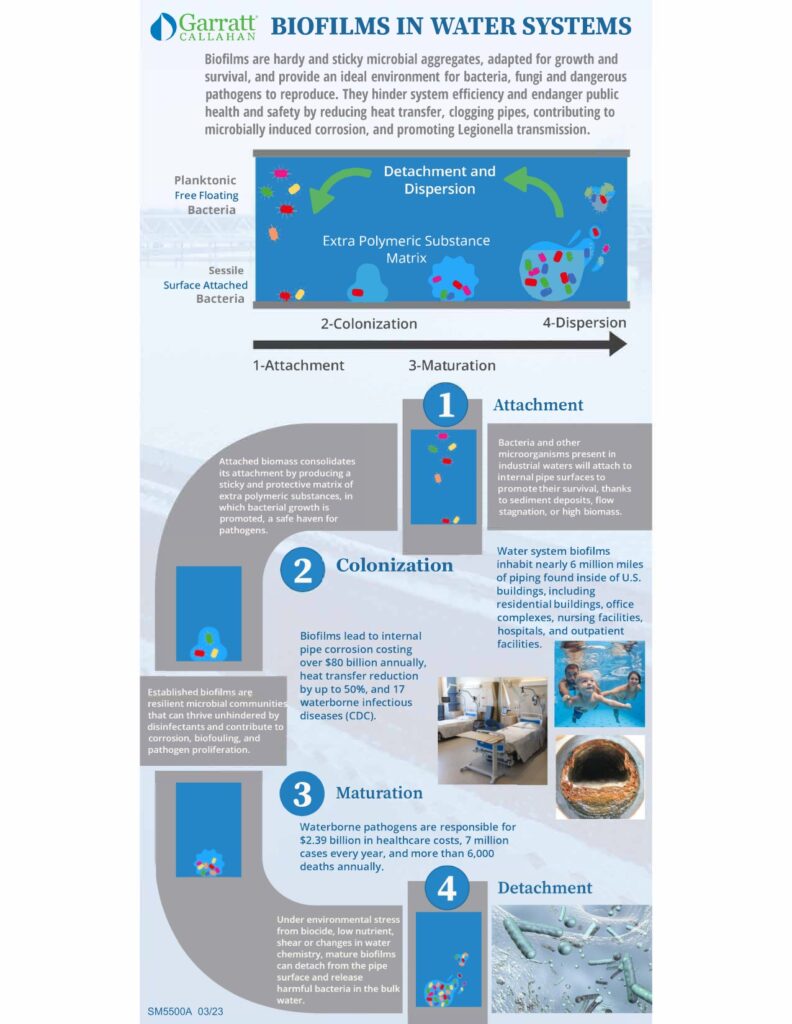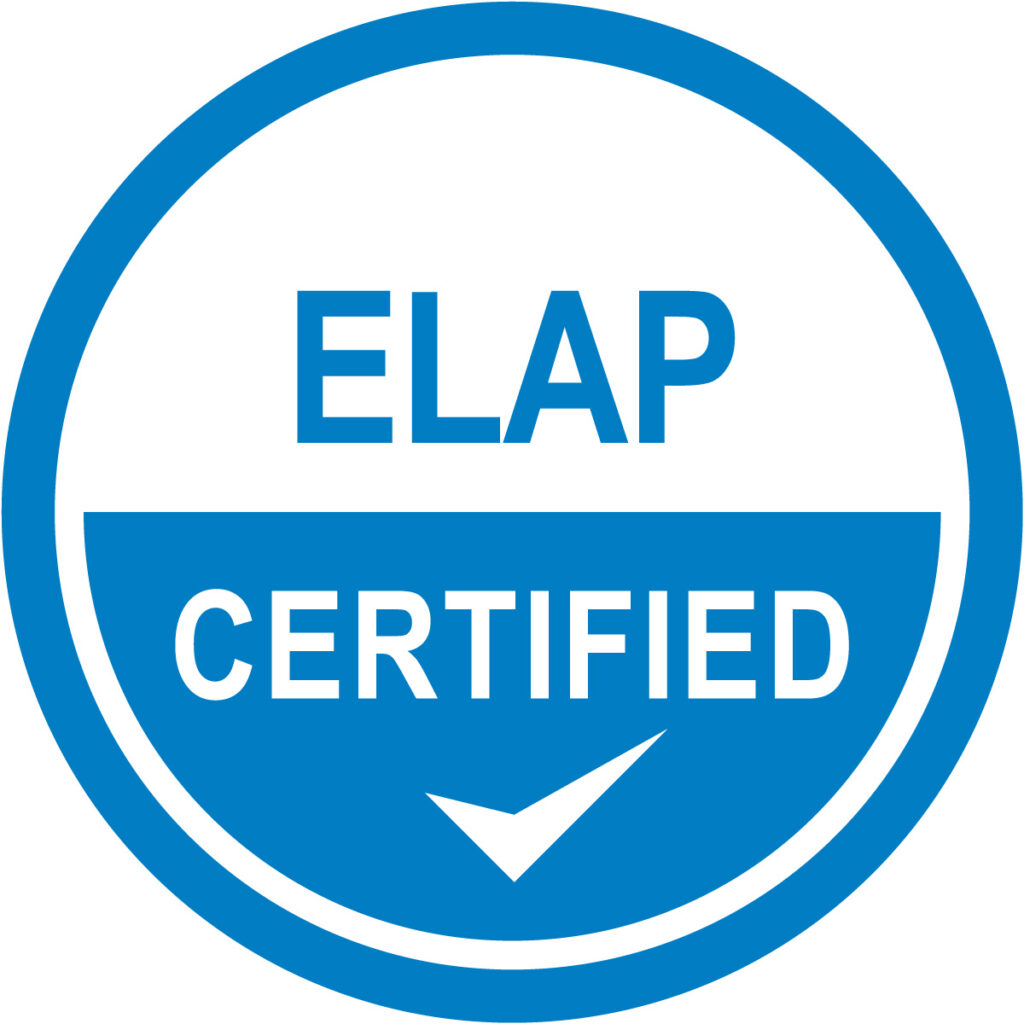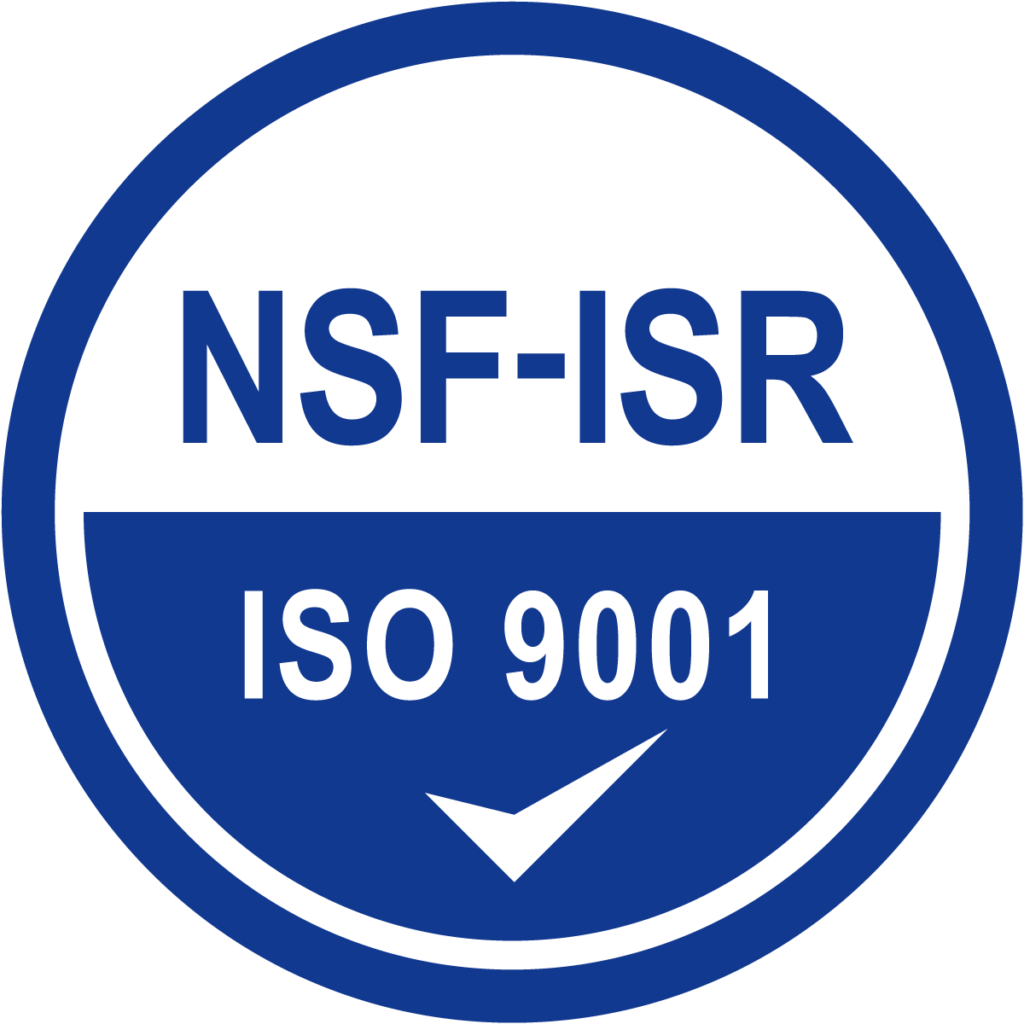Biofilms, Bacterial Microbes & COVID-19

Fresh tap water teems with harmless life, but when water sits inside pipes for an extended period, even for just a few days, more sinister bacterial growth can occur. In fact, when a family leaves home for a week’s vacation, harmful bacteria can grow easily and multiply in static plumbing and water faucets, gathering inside Biofilms — toxic bacterial masses where microbes colonize together in a self-protective layer of communal slime.
Researchers at Montana State University (MSU) believe biofilms have existed on Earth for 3.4 billion years, although organized study into biofilms didn’t begin until 1990 with a grant from the National Science Foundation, which helped establish the Center for Biofilm Engineering (CBE) at MSU.

More Bacterial Microbes Live in Biofilms Than Live Alone
Biofilms are the primary cause of hospital-acquired infections and lead to up to 15,000 deaths in the U.S. every year. Most bacterial microbes live in biofilms rather than as planktonic (free-living) bacteria, says Professor Paul Sturman, PhD, Research Professor and Coordinator at the CBE Medical Laboratory. They create an extremely nutritious environment harboring a blend of living and dead organisms along with the protozoa and bacteria in the biofilm. Biofilms can be imagined as ‘communities of protection’ for a whole microbial consortium. In a public water system, the biofilm attaches to the surface of pipes, collects in pipe joints, and on the walls of holding tanks, where microbes cluster and create layers within the film. The lower microbe layers are less vulnerable to treatment efforts by virtue of having been covered by new layers.

COVID-19 Water Stagnation
As in the case of this year’s COVID-19 building shut downs, water stagnation occurs when a building has not been in use for a period of weeks or months. This has happened in public buildings around the world during the shutdowns and subsequent diminished levels of use.

Since the early days of the pandemic’s hold on daily life, our water systems have seen these periods of non-use and subsequent stagnation. Upon reopening, we have serious challenges in key areas of water safety. Chlorine is not a preservative; rather, it is a reactive compound that dissipates and can be consumed by other compounds if unused. The current paradigm is to add chlorine to the water system at the water treatment plant after which it flows through pipes, sometimes through booster chlorination stations in the case of extreme distances between the water source and end users. After months of no or low water use, chlorine will no longer be present in adequate amounts, if at all.
Inside Plumbing Biofilms: Legionella and Other Potentially Deadly Infections
Legionella (L. pneumophila), responsible for the respiratory-killer Legionnaire’s Disease, is one of several infectious bacteria living within biofilms, and feeding on the products of dead bacteria and the tissues within. Amoeba, also living in the biofilms, protect Legionella from antibacterial agents.

Legionella is found naturally in fresh water environments, like lakes and streams, but can become a serious health concern when it appears in human-made water systems. Improper care for water systems, from municipal to within residential buildings, can be a life-threatening situation for a public operating inside an assumption of trust in their water safety. Mortality from Legionnaires’ disease is deeply sobering. About one in 10 people who fall sick to the disease will die.
Vigilance in water management—from source water safety and ground water safety, water testing at proper intervals requires the correct infrastructure and execution of duties along the path from water source to drinking water.
A Holistic, Three-Step Response to Waterborne Pathogens
Across healthcare, hospitality, commercial and other settings, Garratt-Callahan brings more than 100 years of progressive expertise in the management of waterborne pathogenic threats to our families and communities.
In hospitals, Garratt-Callahan field engineers and technicians tackle the myriad water treatment challenges throughout the patient care system, from the precise hygienic and environmental requirements of operating rooms and critical care units to the dynamics involved in clean steam sterilization and infectious disease control.

Garratt-Callahan’s multi-barrier approach to water safety encompasses a comprehensive Individual Risk Management Program, including 1) Regular Water Testing; 2) Secondary Disinfection with chlorine dioxide gas (more effective than chlorine) to kill bacteria – and 3) In-line Points of Delivery ultra-filtration. This holistic system can significantly help mitigate the risks of Legionella, Mycobacteria and other harmful microorganisms, including those that cause Botulism, Cholera, Dysentery and E coli infection.
Since 1904, Garratt-Callahan has lead the way in advancing water treatment and, as technology developed, adapted life-saving practices that make water safer. We are your trusted partners and our goal is your safety as we navigate today’s current pandemic that has disrupted life around the world.
Get The Water Treatment You Need
"*" indicates required fields












